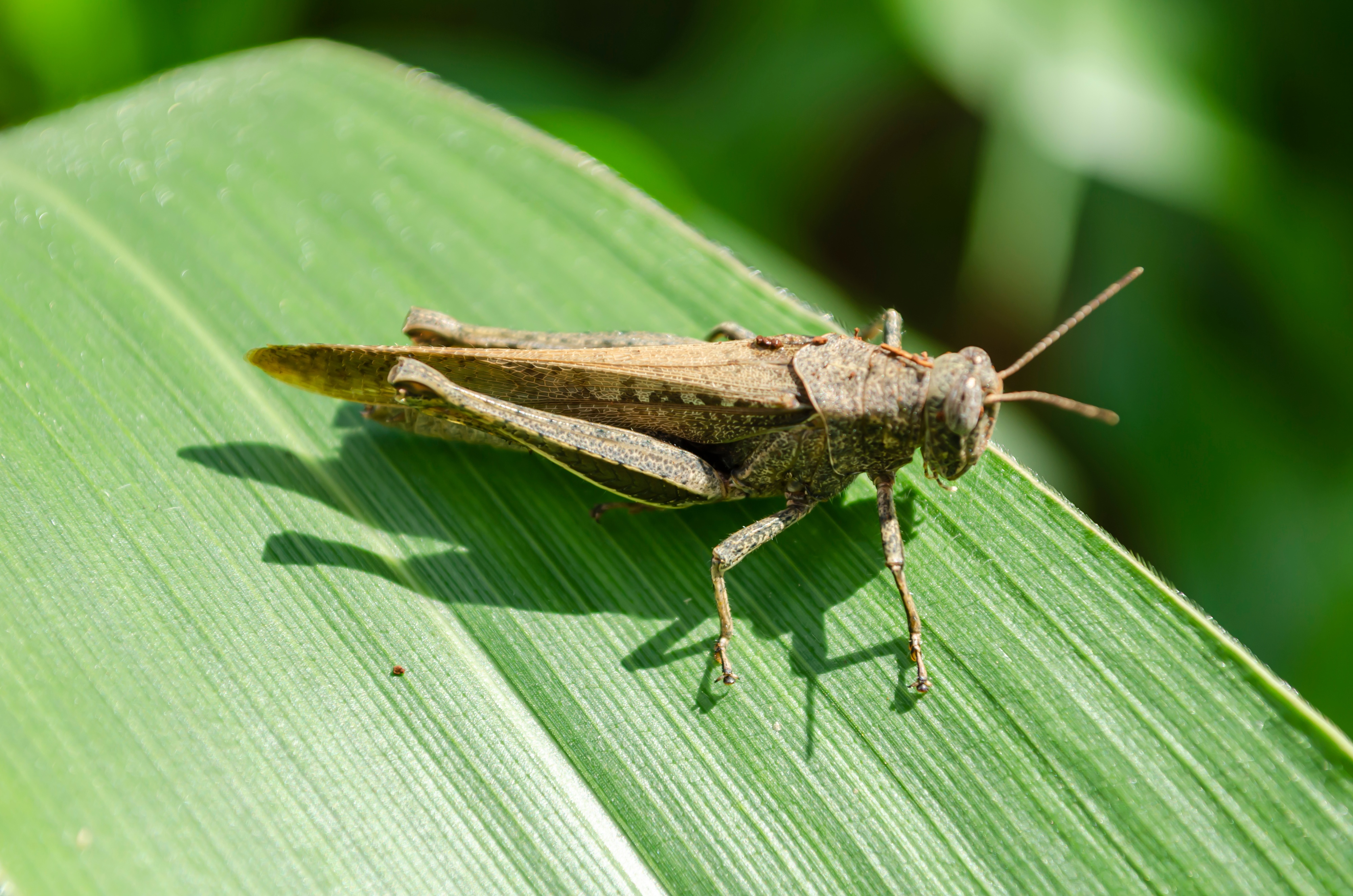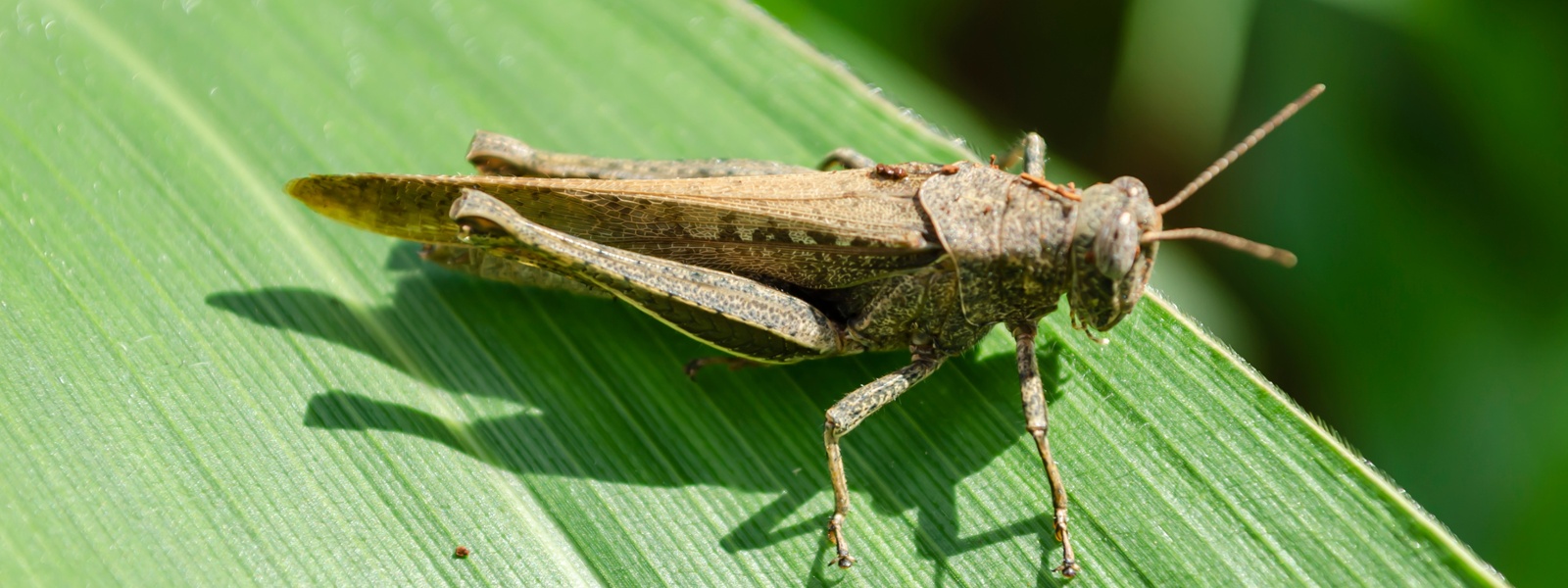Grasshopper damage, losses down as infestations decline

Photo/Licensed image

By Christine Souza
Grasshoppers and Mormon crickets, which in past years traveled great distances and destroyed tens of millions of dollars of Northern California crops, have emerged again this year, although farmers report a bit of a reprieve.
The emergence of grasshoppers, which typically lay eggs in the fall and begin hatching by summer, was later than was seen in previous years. This year, populations were visible at the end of June rather than the beginning. This delay, coupled with a staggered hatching period, helped reduce the intensity of infestation, but some hot spots remain.
“The grasshoppers weren’t able to emerge and be an infestation all at once,” said Laura Snell, University of California Cooperative Extension livestock and natural resources adviser for Modoc County. “Are we still going to have some losses? Yes. But the spread-out emergence helped minimize concentrated damage.”
In the past few years, Siskiyou, Modoc, Lassen, Sierra, Plumas and Shasta counties reported active grasshopper and cricket populations fueled by periods of prolonged drought. Farmers say the grasshopper population this year is more manageable. However, they say the pest’s presence remains a concern.
Plumas County rancher Susy Pearce is among those breathing a cautious sigh of relief. After battling heavy infestations that forced her to spend upwards of $20,000 in pest control from 2021–2023, she said she has seen a few grasshoppers, “but nothing to panic about, thank goodness.”
In recent years, grasshopper infestations were so thick, Pearce recalled, that “the cows had their eyes shut walking across the meadows.”
“They would wipe out our feed so bad,” she said of the pest. “We have a lot of clover, and they would eat everything and just leave the bloom.”
Siskiyou County farmer Marc Staunton, who farms in Tulelake, said having more water available for irrigators in the Klamath Basin helped reduce grasshoppers.
“This year, a lot of that ground was flooded during the wintertime, which was a major change,” he said. “Everything within the project was either flooded or then tilled and planted.”
In past years, large swaths of dry, fallowed land created prime breeding conditions for several species of grasshoppers, which damaged hay, onions and other irrigated crops in the basin. With more land under cultivation and wetter conditions from winter flooding, Staunton said, pest development was likely disrupted.
Snell said even though grasshopper populations were not as dense this year, they were observed in every life stage—from newly hatched nymphs to mature adults across affected counties.
Generally, grasshoppers this time of year are at younger life stages than in past years, she added. Due to the later hatch, she said, some farmers completed the first cutting and baling of hay—which is typically higher in quality—before grasshopper populations reached damaging levels. In prior years, baling in heavy-infested fields led to mold issues.
In 2023, the Modoc County Agricultural Commissioner estimated more than $52 million in losses from grasshopper damage to alfalfa, grain hay, pasture forage and small grains.
Locals have been constantly communicating with the U.S. Department of Agriculture Animal and Plant Health Inspection Service since late 2021 to push for coordinated treatment efforts.
USDA operates a grasshopper suppression program across multiple western states and provides treatments on federal lands and cost-share options for adjacent private lands.
However, California has not seen federal suppression efforts in more than a decade, in part due to the absence of a formal environmental assessment, which Snell said is a necessary step under the National Environmental Policy Act, or NEPA.
USDA officials visited affected counties in June to conduct grasshopper surveys to support preparation of an environmental assessment, which Snell said shows some progress.
“USDA-APHIS spent a good amount of time with us and have a better perspective now, seeing our very rural range country,” she said.
In conducting surveys, Snell said, officials found that the impact of grasshoppers extends beyond crops. Several years of infestations have stripped sagebrush, bitterbrush and juniper trees. Though junipers are considered invasive, brush species are vital for wildlife and grazing ecosystems, she said.
“We viewed significant patches of brush and small juniper trees that had died due to grasshopper infestations,” Snell said. “Some areas were so bad that the Modoc National Forest is now looking into replanting sagebrush and other native species this fall.”
Farmers have expressed concern that previous data gathered by local and state scientists were not accepted by USDA, slowing the path to treatment. With field data collected, Snell said, the department is preparing a draft environmental assessment, which is expected to be released for public comment this winter.
“We need the agriculture community to participate in the comment period,” Snell said. “Getting through the NEPA process is the first step. Once that happens, we can ask for federal funding and be part of the national Grasshopper and Mormon Cricket Funding Program.”
Even though grasshopper populations appear less severe this season, farmers and officials say infestations are cyclical, and the pests are resilient. Therefore, they are expected to return, they said.
Christine Souza is senior editor of Ag Alert. She can be reached at csouza@cfbf.com.




